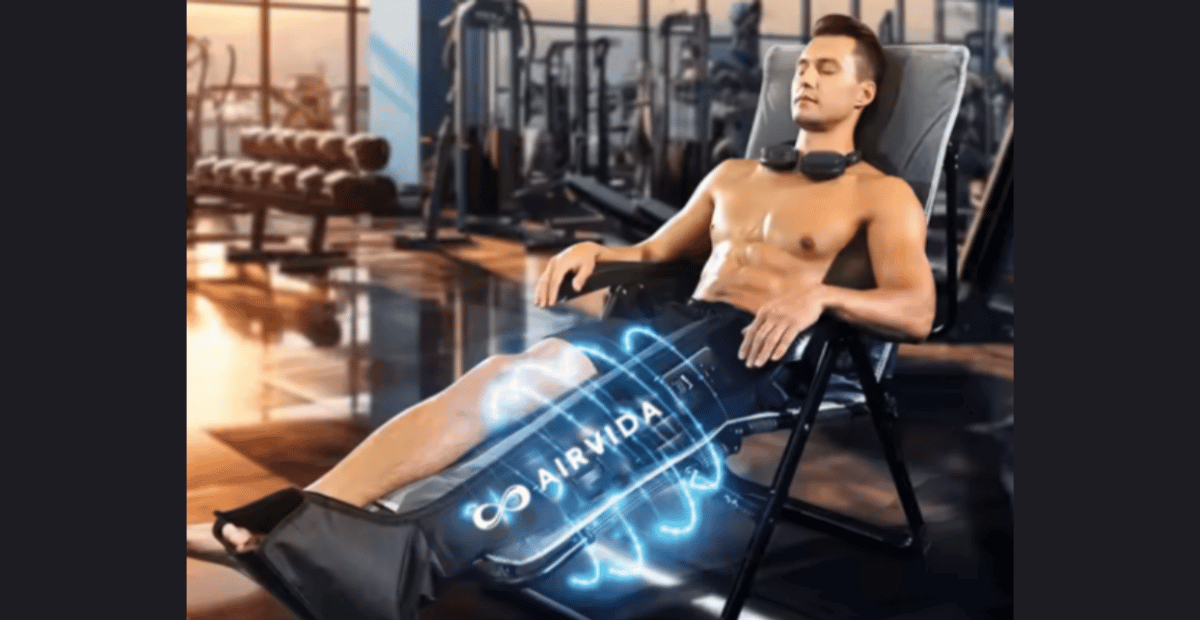A leg compression machine for swelling can be a game-changer for individuals struggling with fluid retention, poor circulation, or recovery after surgery. These machines apply controlled air pressure to the legs, helping to reduce inflammation, ease discomfort, and restore proper blood flow.
This article will discuss how compression therapy supports swelling relief, key features to look for in a machine, and top-rated options for home use. Keep reading to discover what makes the best leg compression devices truly effective and how to choose the right one for your needs.
What Causes Leg Swelling?
Leg swelling can stem from various factors, including medical conditions like lymphedema or venous insufficiency, as well as lifestyle habits such as prolonged sitting, inactive circulation, or high-sodium diets. Standing for long hours without movement or post-surgical fluid buildup can also lead to edema.
Addressing swelling early is essential to prevent complications such as skin breakdown, decreased mobility, or chronic inflammation. A leg compression machine for swelling can help mitigate these effects by encouraging fluid movement back toward the heart, reducing pressure on feet and ankles, and improving overall tissue health.
How a Leg Compression Machine Works
A leg compression machine for swelling uses sequential air chambers or static pressure sleeves to apply compression around the limbs. As chambers inflate in a pattern, they push stagnant fluid upward and stimulate circulation in both veins and lymph vessels.
This therapy mimics natural muscular contractions that help pump fluids out of the legs. Some machines offer static compression, holding steady pressure, while sequential models deliver waves of inflation for enhanced efficacy. Most devices allow adjustment of pressure intensity, session duration, and treatment zones (e.g., calves only or full leg) to match individual needs.
Benefits of Using a Leg Compression Machine for Swelling

Using a leg compression machine for swelling regularly offers:
-
Reduced inflammation and fluid retention, helping relieve tightness and discomfort.
-
Improved blood flow and lymph drainage, promoting quicker recovery and healing.
-
Enhanced post-operative or post-injury recovery, thanks to gentle massage and fluid management.
-
Aid in athletic recovery: prevents delayed-onset soreness and supports muscle recuperation.
Over time, consistent use may improve mobility, reduce heaviness in legs, and enhance daily comfort. Users with chronic swelling, long-haul travel edema, or prolonged standing jobs often find significant relief through routine sessions with a leg compression machine for swelling.
Key Features to Look For in a Leg Compression Machine
When selecting a leg compression machine for swelling, prioritize these features:
-
Adjustable pressure levels: Allows customization from mild to therapeutic compression.
-
Treatment zones: Choose full-leg sleeves for comprehensive coverage or calf-only inflatable cuffs for targeted therapy.
-
Portability and battery life: Especially important if you plan to use it at work or on the go.
-
LCD/display controls: Simplifies timing, mode selection, and pressure adjustments.
-
Heat or vibration options: Some models include additional modalities to enhance circulation further.
Comfort and fit are essential to ensure the cuffs or wrap-around sleeves accommodate your leg size and shape comfortably. These features help ensure the therapy is effective and easy to continue long-term.
How to Use a Leg Compression Machine Safely at Home
To safely use a leg compression machine for swelling, set up a clean, flat surface and wear it with fitted sleeves covering affected areas. Begin with lower pressure settings and shorter sessions (10–15 minutes), gradually increasing to 20–30 minutes as comfort allows.
Start with 3 sessions per week, monitoring swelling, discomfort, and skin condition. Maintain hygiene by cleaning sleeves after each use. Avoid use on unhealed or irritated skin. Over time, you can adjust frequency to daily sessions as tolerated.
Track your progress in a journal, log symptoms before and after sessions to assess improvements. If you experience pain, skin discoloration, or circulatory symptoms, stop use and consult a medical professional.
Excellent Leg Compression Machine for Swelling

If you’re seeking a reliable, high-performance leg compression machine for swelling, the Airvida Cordless Leg Compression Boots with LCD Screen deliver a smart, athlete-approved solution. Designed for full-leg coverage and deep compression therapy, these boots help reduce inflammation, boost circulation, and accelerate muscle recovery.
Key highlights include:
-
Smart Pressure Technology that auto-adjusts to leg size for optimal comfort and safety
-
Four-zone compression targeting feet, calves, and thighs
-
Cordless & rechargeable with a 3200mAh battery for up to 180 minutes of use
-
Whisper-quiet motor for undisturbed relaxation
-
Three massage modes with adjustable pressure from 50 to 200 mmHg
Perfect for athletes, gym-goers, or anyone battling leg fatigue, these boots offer pro-level recovery without bulky cords or complicated setup. They also come with a travel bag, charging cables, and sizing options for a secure fit.
Learn more or order now at Airvida Cordless Leg Compression Boots
Who Should and Shouldn’t Use a Leg Compression Machine?
A leg compression machine for swelling is ideal for those with venous insufficiency, post-surgical edema, athletic recovery needs, or prolonged sedentary periods. It’s especially helpful for seniors or desk-based workers seeking daily relief.
Avoid using compression therapy if you have deep vein thrombosis (DVT), active infection, severe peripheral artery disease, untreated heart failure, or skin ulcers. If any of these conditions are present, consult a healthcare provider before use.
Final Thoughts
Recovery plays a critical role in maintaining long-term mobility and comfort, especially for individuals managing chronic inflammation, fatigue, or circulation issues. Incorporating smart, consistent wellness tools into your daily routine can make a noticeable difference in how your body feels and functions day to day.
A leg compression machine for swelling is one of the most effective, non-invasive tools available for reducing fluid buildup and promoting circulation. If you're ready to take the next step in recovery and relief, contact Airvida Chambers today to learn more about this powerful device and how it can fit into your wellness routine.
Frequently Asked Questions on the Best Leg Compression Machine for Swelling
Do leg compression machines help with swelling?
Yes, leg compression machines help reduce swelling by improving blood flow and stimulating lymphatic drainage. The rhythmic pressure assists in pushing trapped fluid out of the legs, making them effective for managing edema caused by conditions like poor circulation, long periods of immobility, or chronic venous insufficiency.
Is there a machine that removes fluid from legs?
Yes, pneumatic leg compression machines are specifically designed to help remove excess fluid from the legs. They work by applying graduated pressure that mimics the natural pumping motion of muscles, encouraging the movement of lymphatic and venous fluids toward the heart and reducing fluid buildup in the lower limbs.
Who should not use a leg compression machine?
Individuals with deep vein thrombosis (DVT), severe arterial disease, open wounds, or active infections should not use a leg compression machine unless advised by a physician. These conditions may worsen with increased pressure, and using the machine without proper guidance could lead to serious complications or impede proper healing.
How often should I use my leg compression machine?
You can typically use a leg compression machine 3 to 5 times per week, depending on your needs. With a doctor's approval, daily use is often safe and may be especially helpful for those managing chronic swelling or circulation issues. Always follow the manufacturer’s instructions and monitor your response.
When is the best time to use leg compression?
The best times to use leg compression are after prolonged standing or sitting, after workouts, or in the evening when swelling is more likely. Using the machine during these times helps maximize its benefits, reducing discomfort and preventing fluid buildup in the legs and lower extremities.
You May Also Want to Read
5 Surprising Benefits Explained: What Does Red Light Therapy Do?
Why Would You Need a Hyperbaric Chamber? Top Reasons to Get One
How Long Do The Effects of Hyperbaric Oxygen Therapy Last?
Disclaimer
Airvida and partners' advice does not constitute medical advice and is intended for informative and educational purposes only, with no medical or non-medical claims being made. While research & studies show the potential Hyperbaric Oxygen Therapy (HBOT) and Hyperbaric Air Therapy (HBAT) may have implied benefits, individual results may vary. It is required by Airvida & Partners to consult with doctors before being approved for Hyperbaric Therapy (HBOT & HBAT). Read More HERE




